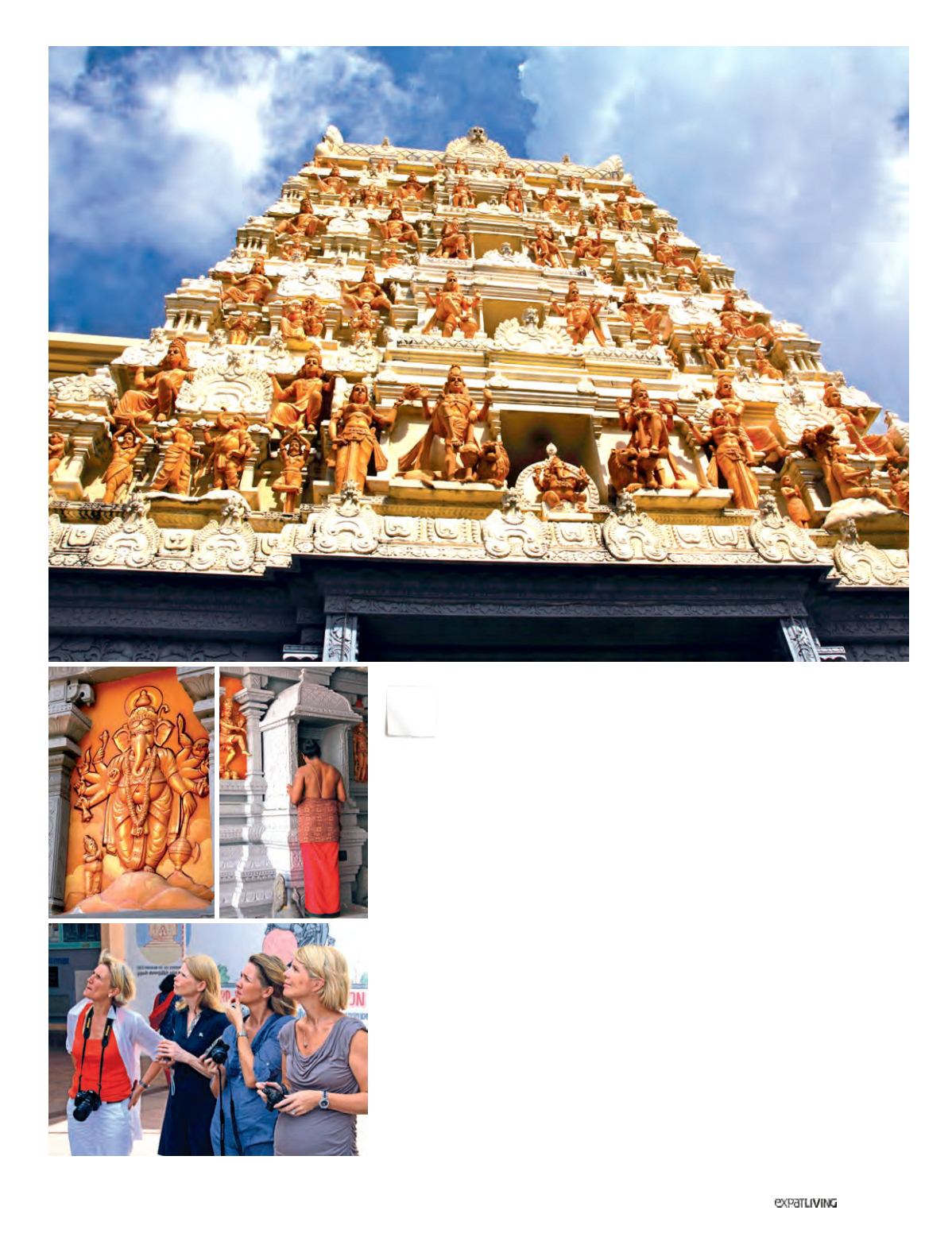

NEIGHBOURHOODS
163
June14
Sri Senpaga Vinayagar
Temple
27 Ceylon Road
Stepping over the doorsill from glaring
sunshine into cool shade, we try not
to crush the flowers underfoot. In a
cupboard to the left is what’s claimed
to be the world’s biggest collection of
Ganesh figurines
– in gold, crystal and
many other humbler materials. Anyone
is welcome to add to it.
Originally a shrine built by poor
labourers from Sri Lanka on the spot
where, in the 1850s, a little statue of the
Hindu god Ganesh was found among
the roots of a chempaka (ylang-ylang)
tree – an auspicious and holy omen – it
has been rebuilt a number of times over
the years. A series of murals shows
its development from tiny shrine to
bigger shrine to increasingly impressive
temples.
Now we’re in a newer part of the
complex that’s been built especially
for
weddings
. “If you come on a
Sunday when there’s a wedding on,
#3
STOP
you’ll probably be invited to eat,”
says Geraldene. Though it’s an
ordinary weekday, temple business is
nevertheless brisk. Apparently, you pay
about 50 cents for an ordinary prayer;
you can either say your own prayer, or
ask the priest to make it for you.
The temple
priests
– generally tall,
strong men – all train in Sri Lanka for a
number of years. Each morning, we’re
told, they have to wake up very early to
clean the temple and physically wash all
the gods. That’s a big job in itself.
Indicating a statue of Ganesh wearing
a crown, our guide tells us that all figures
with crowns are saints. Ganesh’s ears,
she explains, are a message to listen
to the guru, and to listen more than we
speak. One of his four hands holds a
stick, symbolising the stick used by a
mahout, and another holds a lasso; both
are meant to remind us to stay on the
straight and narrow path, and to seek the
middle way. His third hand holds a ball
of rice, and the last holds the broken-off
tip of his tusk, which he used to write the
Hindu holy books.



















